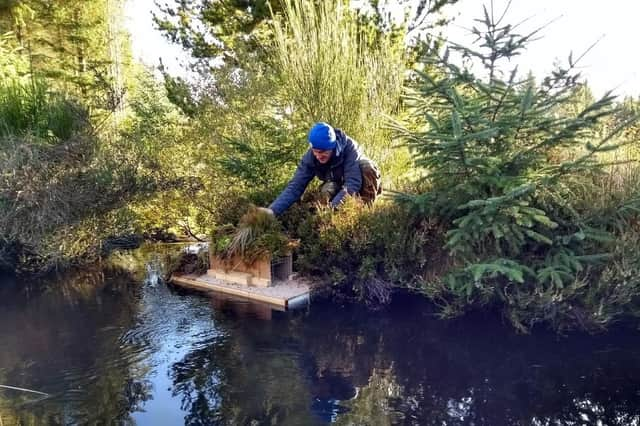Project calls for volunteers to help combat Angus predator problem


The Scottish Invasive Species Initiative is seeking help to keep track of and deal with introduced American mink.
The largest invasive non-native species control project in the British Isles, the initiative has been tackling non-native invasive species in northern Scotland since 2018.
Advertisement
Hide AdAdvertisement
Hide AdLast year, the project was awarded £2.08 million from the Scottish Government’s Nature Restoration Fund to continue its work until at least 2026. It is a partnership project managed by NatureScot and the National Lottery Heritage Fund, in partnership with 10 Fishery Trusts and the University of Aberdeen.
The project is now looking to recruit new volunteers to expand and improve its American mink detection and control network.
The American mink was brought to Scotland for fur-farming in 1938 and, following both escapes and deliberate releases, became established in the wild in the 1960s.
Mink are opportunistic predators that take whatever prey is available - often killing more than they require for food at that time.
Advertisement
Hide AdAdvertisement
Hide AdTheir presence in the countryside has devastating effects on native biodiversity, particularly ground nesting birds and water vole populations.
Water voles are the UK’s most rapidly declining mammal and predation by the American mink is a major cause of their decline.
Owen Barron, project officer for the North and South Esk rivers, said that mink pose a serious threat to wildlife and can wipe out local populations of vulnerable birds and mammals.
He said: “We need a strong monitoring network in the area to help control their numbers and protect native biodiversity. We already have a team of dedicated volunteers active across Angus but are looking to expand our coverage. We have gaps in the network we’d like to fill – particularly on the Bervie Water, upstream of Stracathro on the North Esk and along the coastline between Arbroath and Carnoustie.
Advertisement
Hide AdAdvertisement
Hide Ad“However, we’re keen to hear from anyone who would like to help so if you’d be interested in getting involved please get in touch.”
No experience is required to adopt a mink raft, and the project team will provide all equipment and training, help set up the raft and are always contactable if advice or assistance is needed.
The raft contains a clay pad hidden inside a tunnel and when mink enter the tunnel to explore, they will leave identifiable footprints. Mink are very curious and will be interested in any unusual stimulus in their environment.
The volunteer just needs to check it for footprints every couple of weeks. If mink are detected a live-capture trap is set and, if caught, the mink will be humanely despatched by the project team.
Advertisement
Hide AdAdvertisement
Hide AdThe project also has a new tool available in the fight against this invasive predator - ‘smart traps’, which are fitted with a remote monitoring device which send an alert to the local volunteer when triggered. They do not need to be checked daily, making managing a trap much less time-consuming.
Scientific adviser to the project Professor Xavier Lambin, from the University of Aberdeen said: "Over the spring months we will see an increase in mink activity as they enter the breeding season. We want to detect and capture females before they have a chance to reproduce – their young will spread and recolonise areas we previously freed from the damaging influence of mink and where native wildlife can thrive.”
Anyone wishing to volunteer can contact Owen by emailing [email protected] or calling 07796 898471 for more information.
Scottish Invasive Species Initiative Project Manager Callum Sinclair added: “Volunteers are central to everything we do – and vital to the success of our mink project. We work at a landscape-scale, covering many river catchments and over a third of mainland Scotland. Mink monitoring is only effective at this scale with a comprehensive network of rafts and traps, but we still have gaps in our coverage. If you’d like to get involved, please get in touch – your area could be crucial in the fight against this invasive predator.”
Advertisement
Hide AdAdvertisement
Hide AdTo find out more about mink control with the Scottish Invasive Species Initiative, or the wider project, visit www.invasivespecies.scot. You can also follow their work on social media or contact the team at [email protected]